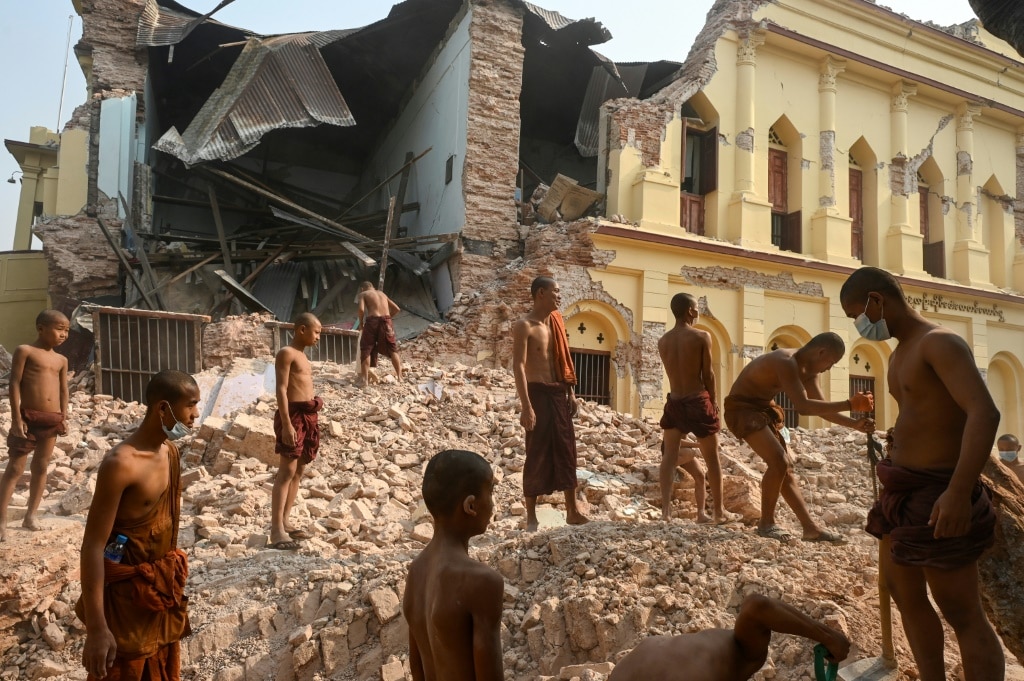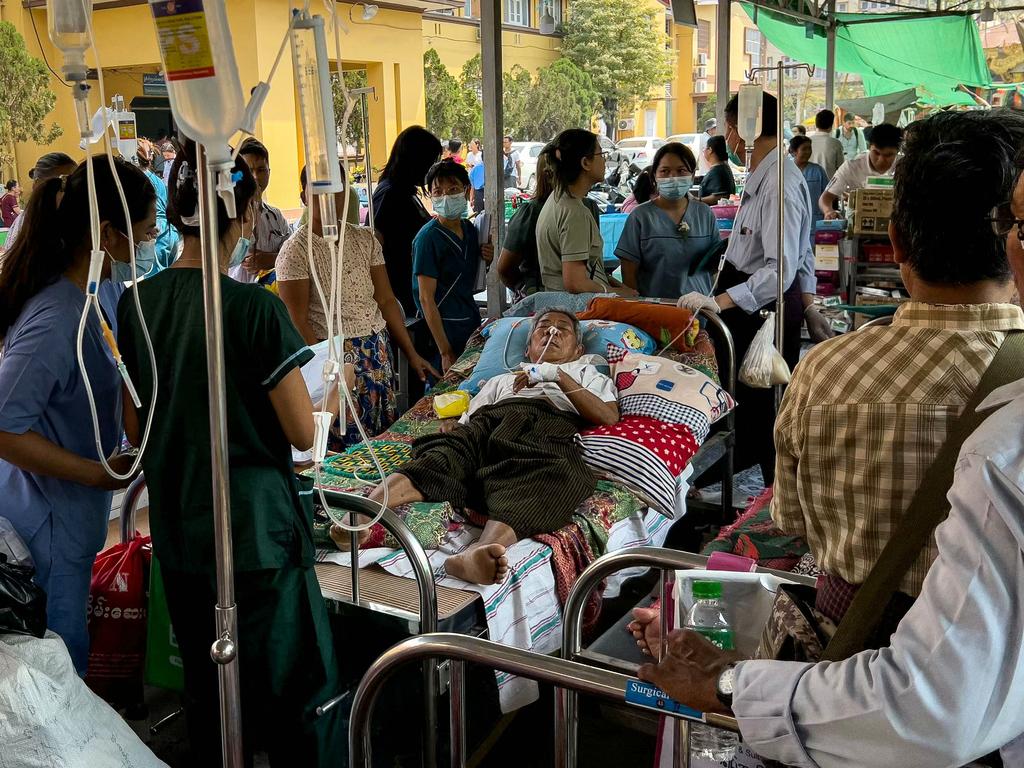Junta chief off to Bangkok as rains loom for quake-struck Myanmar
The death toll from Friday’s devastating earthquake has now surpassed 3000 as Myanmar’s military continues to block aid.

The death toll from Myanmar’s worst earthquake in almost a century topped 3000 people on Thursday as aid and rescue workers warned looming rains would make it even more difficult to get assistance to stricken communities.
Close to 2000 rescue workers from 15 countries are now spread across a swath of central Myanmar devastated by Friday’s 7.7 magnitude earthquake and hundreds of subsequent aftershocks, even as the ruling military remained largely absent.
But with untold numbers of people still buried under rubble and millions of survivors living outside with little access to food, water and shelter, monsoon rain forecast from Sunday for hard-hit Mandalay, Sagaing and the military-held capital of Naypyidaw is set to severely hamper relief work.
“Rain is incoming and there are still so many buried,” one aid worker in Myanmar told Reuters.
“And in Mandalay, especially, if it starts to rain, people who are buried will drown even if they’ve survived until this point.”
Aid efforts are already hugely complicated by the ongoing civil conflict in Myanmar sparked by the February 2021 military coup that ousted the democratic government of Aung San Suu Kyi, and the junta’s ongoing bombing of resistance strongholds including areas affected by the disaster.
The parallel National Unity Government administration, which now governs resistance areas across the country, announced a two-week ceasefire on Sunday to aid in the distribution of emergency supplies, while the powerful Three Brotherhood Alliance of ethnic armed groups also fighting the junta declared a one-month truce on Tuesday.
But it was not until late Wednesday night that the junta relented to international demands for a ceasefire until April 22 amid mounting condemnation of its continued aerial attacks even as it appealed for international assistance.
But it also warned it would respond to attacks, acts of sabotage or “gathering, organising, and expanding territory that would undermine peace”.
In an update issued on Thursday, the NUG said more than 8.8 million people across 47 townships were directly quake-affected, but that the military and security forces continued to restrict access to many areas.
“Earthquake-affected victims face significant challenges to obtain food and shelter because of the military’s restrictions on transportation and communication, and are not receiving support from the emergency response organisations under military control,” it said.

Despite the devastation, junta chief Min Aung Hlaing was scheduled to leave Myanmar late on Thursday for a rare trip to a regional BIMSTEC summit in Bangkok of the seven littoral nations of the Bay of Bengal; Bangladesh, Bhutan, India, Myanmar, Sri Lanka and Thailand.
The invitation is something of a diplomatic coup given junta leaders have been excluded from all major ASEAN events until they comply with the group’s demands for hostilities to end and peace talks to begin among all parties to the conflict.
Min Aung Hlaing, the subject of hundreds of Western sanctions and an International Criminal Court investigation, will hold talks with the heads of government of all BIMSTEC member nations during Friday’s summit in Bangkok to discuss potential relief and recovery co-operation.
The Thai capital was also effected by Friday’s earthquake, which toppled a 32-storey skyscraper still under construction, killing at least 22 people and trapping at least 70 more under the rubble.
Even before Friday’s earthquake, 3.5 million people were displaced by the fighting, many of them at risk of hunger, according to the United Nations.








To join the conversation, please log in. Don't have an account? Register
Join the conversation, you are commenting as Logout